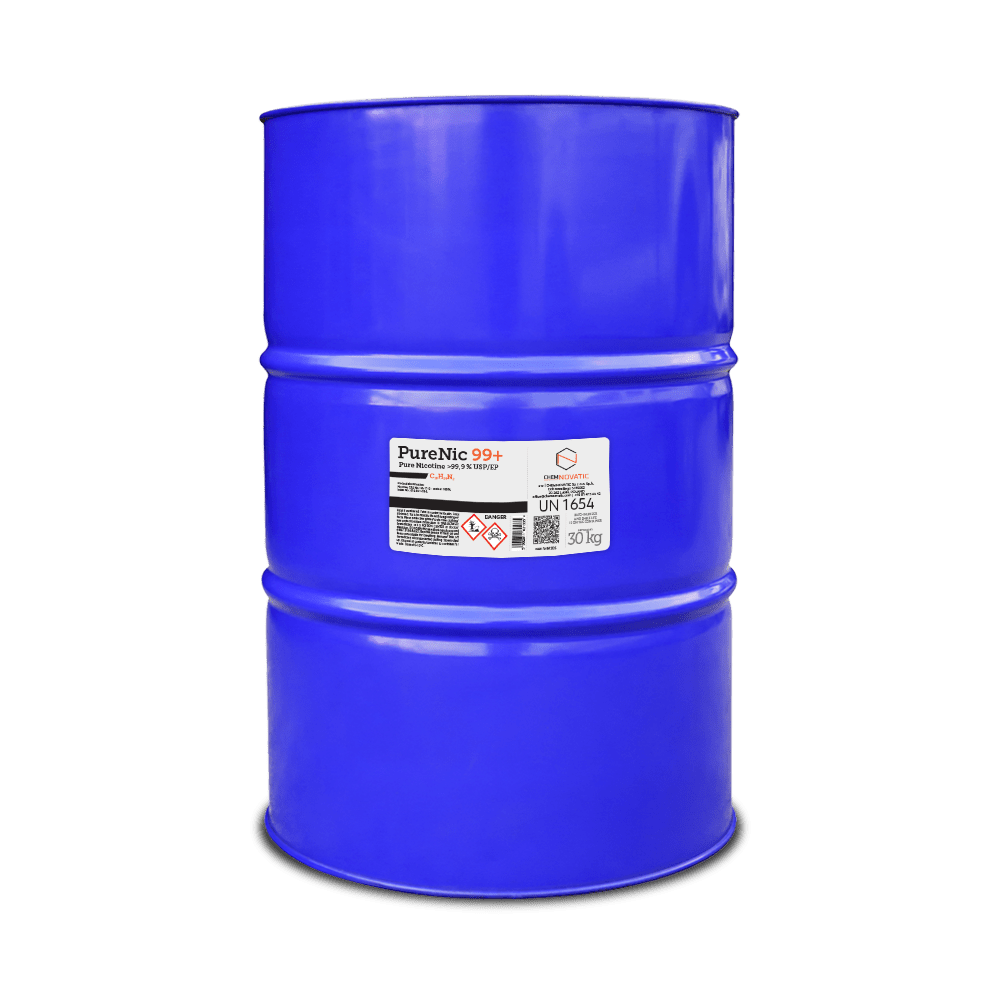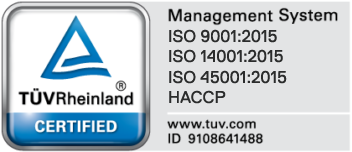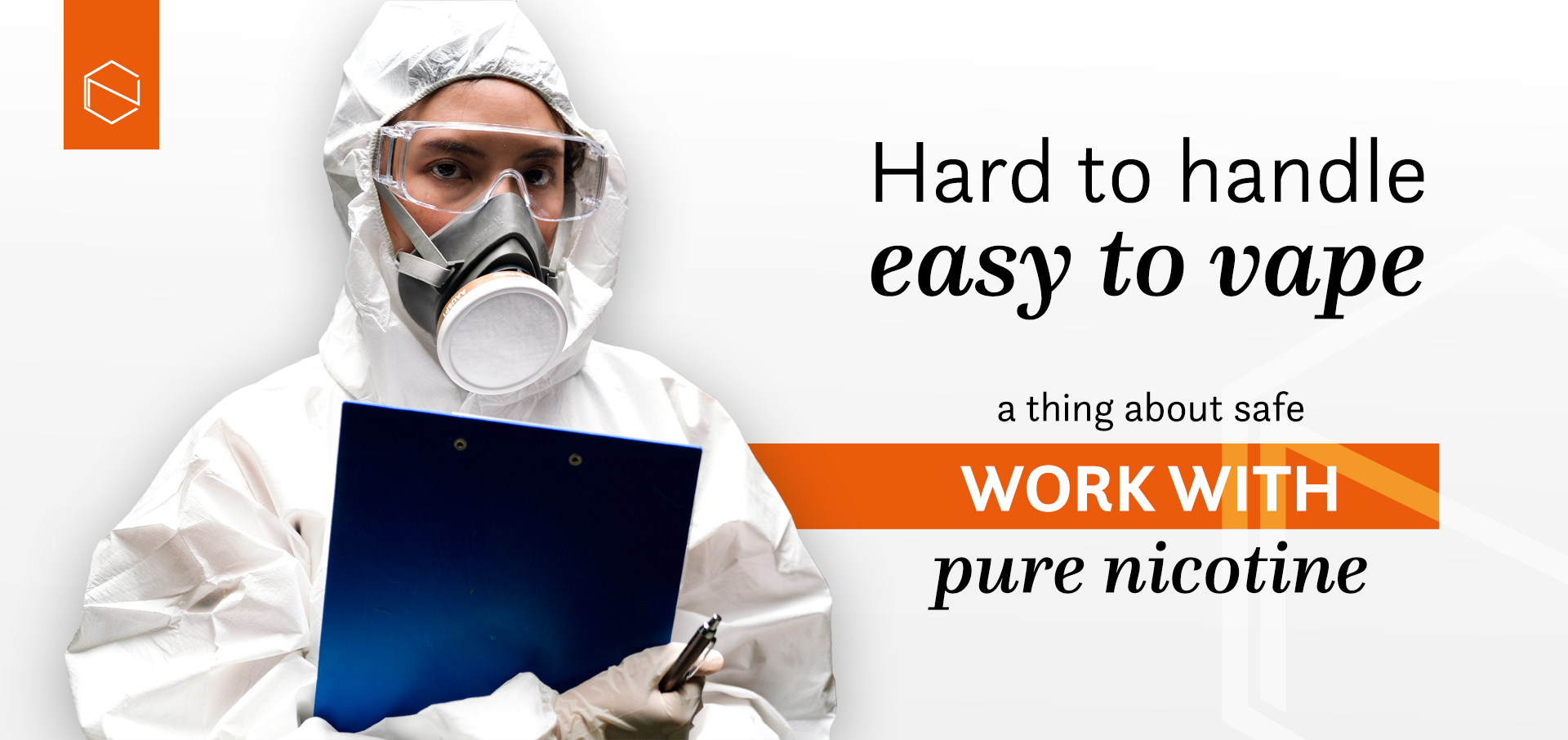
Nicotine is omnipresent. E-liquids, e-cigarettes, nicotine pouches, nicotine patches, nicotine toothpicks, cigarettes, tobacco plants, and even some vegetables – are its carriers or sources. The substance is also present in medical products, which allows providing controlled levels of it to the human organism to help give up smoking. However, one should learn by heart – pure nicotine handling demands special safety measures.
Nicotine – introduction to the substance
The substance in pure form is highly perilous, and toxic, and may bring fatal consequences. Due to that, now we are going to take a look at nicotine handling, nicotine storage, health care, and dangers associated with working with nicotine in an industrial environment.
If you wonder how the substance is produced, beginning from sourcing tobacco, and ending up in pure liquid form, make sure to check the story of nicotine and its production.
Keep in mind, however, that even in less purified form nicotine may be poisonous. An example of such a situation is the green tobacco sickness described later in this article. Also remember, that nicotine should not be worked with in a private environment, without specialized education, and professional equipment! Even one 500 ml bottle may kill hundreds, if not thousands, of people in the nearby area if handled improperly.
Nicotine sources
Before detailing safety measures, let us say that nicotine is a substance found in various plants and vegetables: eggplants, tomatoes, peppers, and more. In these examples, its concentration is negligible compared to the most known source – Nicotiana tabacum – the most common species of tobacco. The substance is present in the plant’s leaves and, when farming or sourcing, may cause a disease called “green tobacco sickness” because of direct contact with farmers’ skin.
Smoking and vaping comparison
Nicotine is highly associated with smoking, and as stimulating as this process may be, it is also unhealthy. Fumes of combusted tobacco contain around 250 toxic substances that are officially acknowledged as harmful. On the other hand, vaping is estimated to be 95% less harmful, and contributes to the tobacco harm reduction concept, and allows controlled nicotine intake, which may help with cigarette withdrawal symptoms.
Note, however, that if one does not vape, we do not recommend starting it, and now let’s focus on the dangers that stem from the substance in an industrial environment.
The dangers of working with nicotine
How to act when nicotine is set on fire?
Firstly, let us state that nicotine set on fire is a situation that should never happen! Under no circumstances! Unless it is for training purposes of firefighters’. However, if such a situation takes place, it means that somebody made a critical mistake by not developing crucial safety procedures, forming them incorrectly, or neglecting them.
When it comes to nicotine one of the safety measures is preventing it from ignition sources. However, if that happens and the fire starts, there are methods to extinguish it. Among the suitable media, there are:
- CO2
- Sand
- Dry chemical (powder)
- Water spray
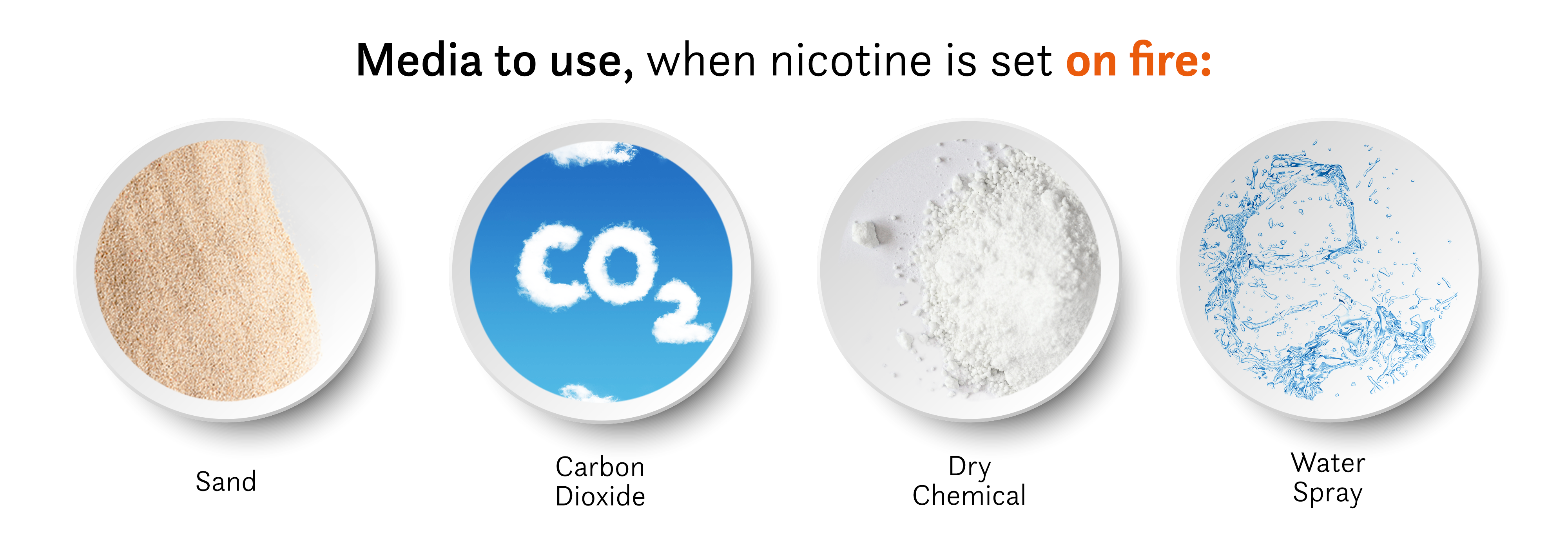
If you struggle with burning nicotine, remember to adapt these media to materials in the surroundings. Additionally, under no circumstances use a water jet. It may cause a risk of propagation of the flame.
Specialist firefighter equipment
Moreover, firefighters should wear protection typical in case of fires and not stay in fire-endangered areas without special, resistant clothing, self-contained breathing apparatus, and suitable respiratory gear. Additionally, containers with water are to be cooled down from a distance to prevent them from breaking and spreading the liquid.
Nicotine, when burning, may produce toxic fumes of carbon and nitrogen oxides, so one must not inhale it. Additionally, the substance is toxic for aquatic organisms and may cause long-term effects in such an environment.
How to act when nicotine meets the eye
Nicotine is a highly toxic substance that can have even fatal consequences. When one comes in contact with it, they should take definitive measures to minimize the dangerous outcomes and preserve health and life. What’s essential is the canal through which nicotine is absorbed:
- If nicotine is poured on one’s skin, immediately take off contaminated clothing and wash the skin with plenty of water with soap.
- In case nicotine meets the eyes, wash them with plenty of water with the eyelid held open, and keep up the process for up to 10-15 minutes.
- When nicotine ingestion happens, do not force vomiting. One shall rinse their mouth with water. If they are unconscious, do not give them anything to drink.
- If one inhales nicotine fumes, cut off the source by removing it to fresh air and keep warm and calm.
The acute toxicity estimate and the nicotine poisoning symptoms
The acute toxicity estimate doses for nicotine intake are:
- Oral: 5 mg/kg
- Skin: 70 mg/kg
- Inhalation/mist: 0,19 mg/l
When one comes in direct contact with the substance, the following symptoms may occur: burning in the oral cavity, throat, and stomach, exhaustion, seizure, worsening of respiration, irregular heartbeat, impaired motor coordination, and coma. Additionally, chronic nicotine poisoning may lead to cardiovascular disorders.
Remember that in every case you come in dangerous contact with nicotine, you should consult a medical doctor!
Working with nicotine
If you are interested in how nicotine is sourced, extracted, and produced, read more about the process of manufacturing nicotine. It, however, concerns production. Now, let’s take a look at handling the substance in an industrial or laboratory environment.
Equipment
Various safety measures are required when working with chemical substances.
The first group is collective protection measures, which means an employer has to equip the room where one works with nicotine with ventilation or fume hoods. Additionally, there must be a sink and an eye washer. Moreover, working alone is forbidden, and there always has to be assistance. There is also one more guideline that concerns the highest allowed concentration of a chemical substance in a workplace. On a daily and weekly scale, national law regulates it. It must not be exceeded due to the short- and long-term health consequences.
Now, let’s move on to the second group of safety equipment which is protective gear for working with nicotine. Keep in mind, however, that the norms mentioned below concern countries in the European Union. For different regions of the world, various administrative bodies and documents regulate these standards.

Nicotine safety gear – Uniforms
This part of safety gear covers most parts of the body and is necessary. Although they do not cover faces or palms, other parts of safety equipment complement them.
Safety uniforms are regulated by Standard EN 14605, which concerns protective clothing against liquid chemicals. It specifies performance requirements for uniforms with liquid-tight (Type 3 protection class) and spray-tight (Type 4 protection class) seams and also concerns apparel that only partially protects the body.
Uniforms compliant with the aforementioned standard must also go in pair with EN 340:2003. It describes general requirements for protective clothing, like having no adverse effect on health or causing no skin irritation.
When buying uniforms for our employees, we consider paying attention if the clothing protects against the dangers mentioned in the table:
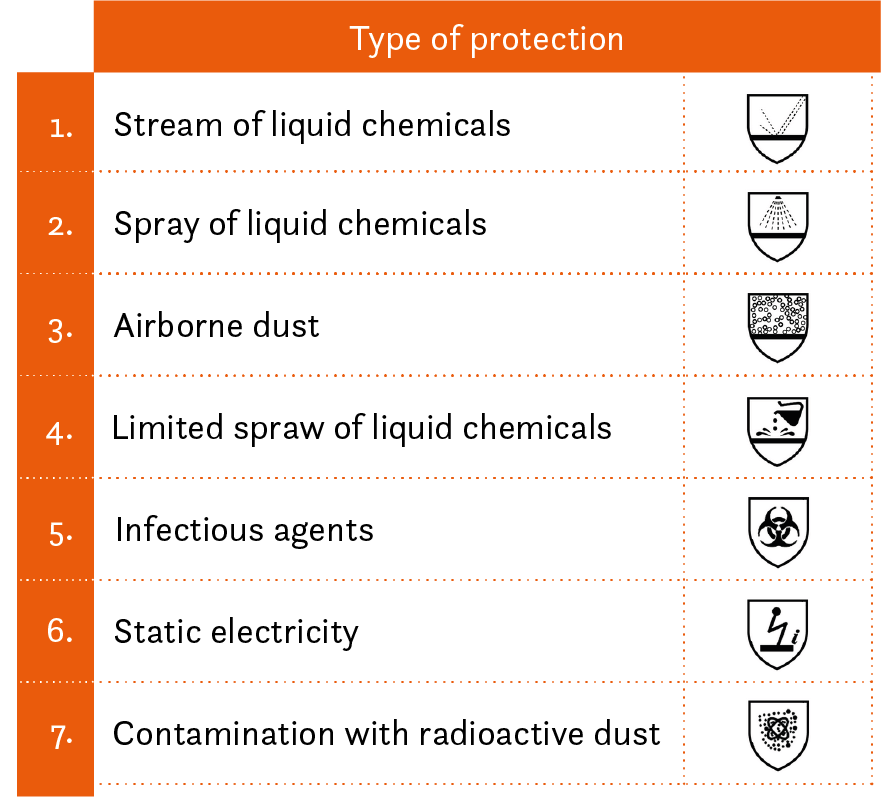
Nicotine safety gear – Gloves
It is hard to imagine working on nicotine without using your hands. That is why wearing special gloves is an absolute must! As for gloves’ size, the main requirement is they have to cover the wrists. Additionally, there are 3 types of them, according to EN ISO 374-1:2016:
- Permeation resistance type A: resistant to at least 6 tested chemicals for at least 30 minutes each. Protection: ABCDEF
- Permeation resistance type B: resistant to at least 3 tested chemicals for at least 20 minutes each. Protection: ABC
- Permeation resistance type C: resistant to at least 1 tested chemical for at least 10 minutes each. This type, however, does not fully protect against nicotine. Protection: C
Below you can find substances against which the gloves protect. Let us add, however, that all gloves must protect against micro-organisms, bacteria, and fungi.
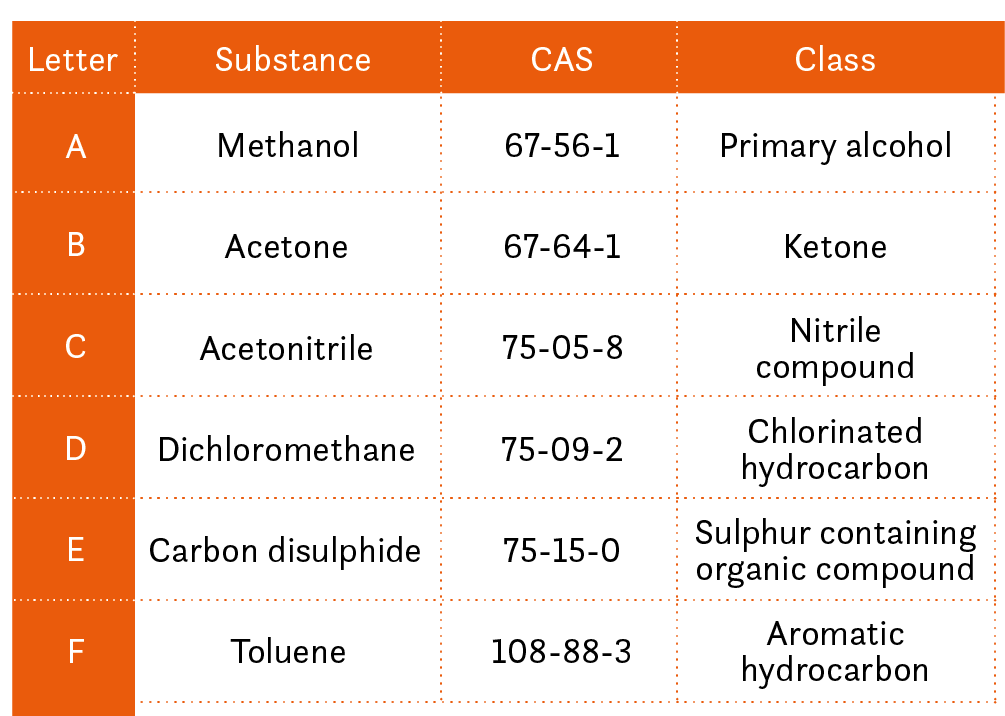
Nicotine safety gear – Boots
One cannot forget about protective boots. Working footwear may be associated with construction sites due to the fact they have characteristic impact-protection pads. However, there are also types of footwear that protect, i. e., against liquid penetration.
EN ISO 20345:2011 standard describes safety footwear requirements. Under this norm, safety boots have to protect feet against 200-joule impact.
Moreover, one can separate 2 classes regarding safety footwear material:
- I – leather and any other material, except all-rubber or all-polymeric
- II – All-rubber or all-polymeric
Additionally, to work with the nicotine, the footwear has to be of category S3, or in justified cases, one can use S5 / S6 category galoshes or footwear protectors.
- S3 – protect against water penetration & absorption; energy absorption of seat region; fuel & penetration resistant; closed seat region, cleated outsole
- S5 – aforementioned feature and: antistatic properties & leak-proof
Nicotine safety gear – Masks
Masks protect internal organs, especially the lungs, by saving one from inhaling the nicotine fumes but also cover the face. If it’s a full mask, it also covers the eyes.
There are various protective masks on the market. They are applicable in two versions: full-face gear or partially-covering masks. In Chemnovatic, we use both – full face masks that meet the requirements of EN 136:2001 Standard and half-masks that are compatible with EN 140:1993 Standard.
Safety masks’ classes
When it comes to full-face masks, there are 3 classes:
- Class 1 – concerning light duty and low maintenance
- Class 2 – concerning general duty, with maintainable parts
- Class 3 – concerning heavy-duty firefighters
As mentioned before, half-masks are also acceptable when working with nicotine. However, when used in negative pressure systems, they may require filters compliant with the norms: EN141, EN143, EN371, or EN372.
Additionally, remember to wear protective goggles when using half or partially-covering masks. The norm EN-166 describes their requirements.
Visiting the production plant and/or the laboratory
Not only people who work with nicotine should care about safety. Every company that deals with dangerous substances should have safety procedures for people who visit the production plant or laboratory.
In Chemnovatic, if a third party is about to visit our production site or lab, they must wear a special apron, cap, gloves, and shoe protector. Additionally, there is a supervisor/guide ready to help at any moment.
Such procedures are there not only for the safety of the visitors but also for the safety of employees and the safety of the products. Wearing caps or protectors prevents dirt or hair from contaminating the area where lab technicians work with nicotine and other nicotine containing products.
Additionally, if you happen to visit a chemical company, be sure not to neglect any procedures, and if any doubts arise, ask the competent person about the safety requirements.
Fear not! Your product is safe
Due to nicotine’s toxicity, it requires special measures to provide safety all around. We care about every, even the smallest, detail, so our clients receive untouched products, and nobody gets harmed during the delivery. In order to do that, we use a special security seal. Moreover, our PureNic 99+ label has all essential information on it, along with a QR code for Safety Data Sheet and warning symbols.

There is also a batch number and best-before date printed on the bottle. Our shipments contain a Certificate of Analysis inside and Safety Data Sheet on the outside in the paper version.
To prevent any leakage, we use styrofoam packaging for 1-liter bottles, and everything is packed into plastic bags and secured with Chemnovatic tapes. For safety reasons, we add absorbent mats and extra paddings. Everything sums up to packaging compliant with UN standards.
Keep in mind that the containers in which you receive our PureNic 99+ are also for storing the remainings. However, when you use the products, dispose of them in accordance with the local legislation, and under no circumstances empty the packaging into drains!
As for disposal, reuse, recycling, or liquidation of used packaging – follow the legal guidelines. Do not dispose of empty nicotine packaging with regular household waste, and do not mix them with other waste.
You can also check this article regarding the packaging, storage, and transportation of nicotine.
Quality Verification
Before bottling nicotine, we make sure that the product you buy from us is the best and of the highest quality. To ensure it, we have developed and execute the 4-Steps Quality Verification, which you can learn in the graphic below. Also make sure to read more about our quality and standards.
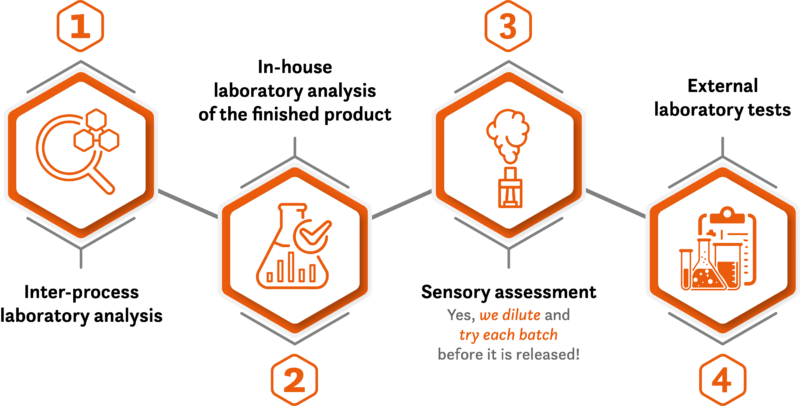
Storing nicotine
Another very essential aspect of launching pure nicotine to the market is storing it. Various conditions should be met when bottling nicotine, storing it before the first opening, and storing it after the opening.
We have described the process of handling and storing pure nicotine and nicotine salts, so don’t hesitate to learn more about it!
The benefits of nicotine
Although nicotine is a dangerous substance, if handled properly, it may bring a great number of benefits. Nicotine-containing products, such as nicotine pouches or e-liquids, may help people who smoke deal with cigarette withdrawal symptoms. Additionally, according to Public Health England, e-cigarettes are much less harmful than traditional smoking, and vaping nicotine-containing products may be a great alternative for people who try to quit smoking.
Conclusion
Although nicotine is a very dangerous substance, it is not only to be tamed but also handled. One simply needs to remember not to neglect the safety protocols and, in case of danger, follow safety procedures. Also, it is essential and better to prevent the danger, than fix its effects. That’s why we have developed and are constantly improving safety measures and standards. Thanks to that, our employees feel safe in their working environment. To prove that, our company has been awarded the Workplace Continous Assessment certificate by Intertek.
Wspólnie rozwiniemy Twój biznes!
Zapisz się do naszego newslettera i otrzymaj bezpłatny dostęp do naszego kursu e-mailowego o surowcach do produkcji e-liquidów (i nie tylko!).
Żadnego spamu, przesyłamy tylko wartościowe treści.






